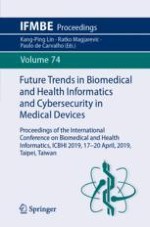2020 | OriginalPaper | Chapter
Investigating the Use of Wearables for Monitoring Circadian Rhythms: A Feasibility Study
Authors : Rossana Castaldo, Marta Prati, Luis Montesinos, Vishwesh Kulkarni, Micheal Chappell, Helen Byrne, Pasquale Innominato, Stephen Hughes, Leandro Pecchia
Published in: Future Trends in Biomedical and Health Informatics and Cybersecurity in Medical Devices
Publisher: Springer International Publishing
Activate our intelligent search to find suitable subject content or patents.
Select sections of text to find matching patents with Artificial Intelligence. powered by
Select sections of text to find additional relevant content using AI-assisted search. powered by
